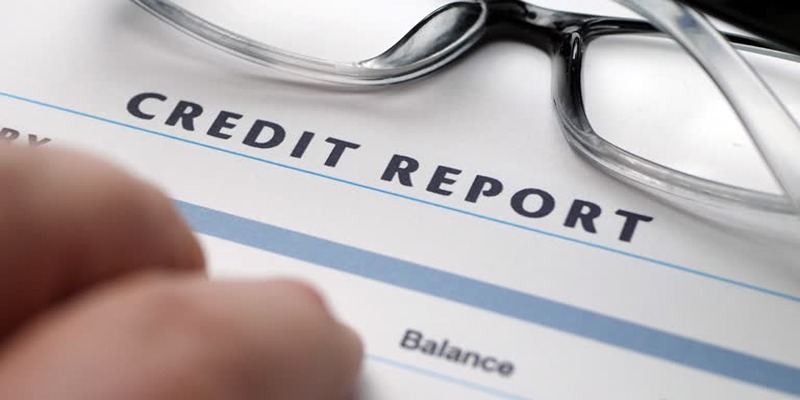Purchasing a home is a major financial decision, and understanding mortgage underwriting can make the process easier. Whether you're a first-time buyer or a seasoned homeowner, this guide explains the underwriting process, what underwriters look for, and how to prepare. Discover the steps to streamline your loan application and move closer to owning your dream home.
Understanding Mortgage Underwriting

Mortgage underwriting is the process lenders use to assess the risk of lending money to you. Essentially, underwriters evaluate your financial profile to determine whether you qualify for a loan and, if so, on what terms.
Think of underwriting as the behind-the-scenes verification process that ensures a lender can comfortably approve your mortgage loan while protecting their financial interests.
Why Is Underwriting Important?
Underwriting is critical to ensure both parties (the lender and borrower) are set up for success. For lenders, it reduces the risk of lending money to individuals who may not have the capacity to repay. For borrowers, it ensures you don't commit to a loan you might struggle to repay.
Key Steps in the Mortgage Underwriting Process
If you’re planning to apply for a mortgage, understanding the underwriting process can help you stay prepared and reduce potential hurdles. Here’s a step-by-step breakdown:
Step 1. Loan Application
The underwriting process begins when you submit your loan application. On the application, you’ll provide vital information, including:
- Personal details (name, address, Social Security number)
- Employment and income information
- Asset and liability details
- Information about the property you are buying
This application serves as a snapshot of your financial situation, giving the underwriter the foundation to begin their evaluation.
Step 2. Initial Loan Estimate
Once your application is received, the lender will provide you with a Loan Estimate. This document outlines key details about the loan, such as the estimated interest rate, monthly payments, and closing costs. While not yet an approval, it’s a transparent way for you to understand what your potential loan might look like.
Step 3. Document Submission
Here’s where the paperwork comes into play. The underwriter will require supporting documents to verify the details listed in your application. Commonly requested items include:
- Recent pay stubs
- W-2 forms or tax returns (usually for the past two years)
- Recent bank statements
- Proof of additional assets, such as investments
- Identification (e.g., driver’s license or passport)
Make sure all documents are accurate and up-to-date to avoid delays in the underwriting process.
Step 4. Underwriting Review
Once your documentation has been submitted, the underwriter evaluates your financial situation to determine your creditworthiness. This review involves several key factors:
Credit Score and History
Your credit score and history are among the first things the underwriter will examine. A strong credit profile demonstrates responsible borrowing habits, which reassures lenders that you’re likely to repay the loan.
If you have late payments, high credit utilization, or derogatory marks, the underwriter may flag these issues and consider them as part of their decision.
Debt-to-Income Ratio (DTI)
Mortgage lenders use your debt-to-income ratio to compare your existing monthly debts to your gross monthly income. A lower DTI indicates you have enough income to comfortably manage your current obligations along with a new mortgage payment.
For conventional loans, lenders typically look for a DTI below 43%, though specific criteria may vary by loan type.
Employment and Income Stability
Employment and income verification ensure that you have a reliable source of income to make your mortgage payments. Lenders often request pay stubs, a letter from your employer, or tax returns to confirm this.
Down Payment and Assets
Underwriters confirm that you have enough saved to cover the down payment (if applicable) and closing costs. They may also look at your reserves, which are funds you have remaining after the down payment to cover future expenses.
Property Appraisal
Since the property itself serves as collateral for the loan, the lender will require an appraisal to ensure its value aligns with the loan amount. If the appraisal comes in lower than expected, the lender may need to adjust the loan terms or require a higher down payment.
Step 5. Conditional Approval or Denial
Depending on their findings, the underwriter will make one of three decisions:
- Conditional Approval: This means your loan will be approved, subject to meeting certain conditions, such as providing additional documents or correcting minor issues with your application.
- Approval: If everything checks out, you’ll receive a full approval, moving you closer to closing the loan.
- Denial: Underwriters may deny a loan if there are significant concerns about your ability to repay. If this happens, request feedback from the lender and explore ways to improve your financial profile.
Step 6. Clear to Close
Once all conditions (if any) are met, the underwriter will issue a clear to close, signaling that the loan is ready to move forward. At this stage, the focus shifts to the final closing process, where you’ll review and sign the official loan documents.
How to Prepare for a Smooth Underwriting Process
While the underwriting process may feel complex, there are steps you can take to ensure it proceeds smoothly:
- Organize Your Documents: Begin gathering key financial documents well before completing the loan application. This includes recent pay stubs, W-2s, tax returns, and bank statements.
- Maintain Stable Finances: Avoid making major financial changes during the underwriting process, such as switching jobs or taking on new debt. Stability is key when getting approved.
- Review Your Credit Report: Check your credit report for errors and address any issues beforehand. A higher credit score can improve your chances of approval and help you secure better loan terms.
- Communicate with Your Lender: Stay in touch with your lender and respond promptly to requests for additional information or documents.
Benefits of Understanding the Mortgage Underwriting Process

Gaining a clear understanding of how underwriting works can make the home-buying process less intimidating and more manageable. Here are some benefits of being prepared:
- Faster Approval: Submitting all required documents and maintaining transparency with your lender can expedite approval timelines.
- Better Loan Terms: A strong financial profile can lead to more favorable interest rates and reduced closing costs.
- Avoid Surprises: Understanding the process ahead of time helps you anticipate potential roadblocks and address them proactively.
Final Thoughts
The mortgage underwriting process is a critical step in securing a loan and purchasing your dream home. While it can appear daunting, understanding how it works empowers you to approach the process with confidence. If you’re ready to get started, reach out to a trusted lender or financial advisor for personalized guidance on your mortgage application. Homeownership is within reach, and with preparation, you’ll be holding the keys to your new home in no time.












